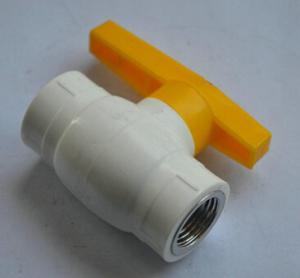Plastic pipes have become a popular choice for various applications, from residential plumbing to industrial fluid transport. A crucial aspect of working with plastic pipes is the selection and use of appropriate fittings. Fittings are essential for connecting, extending, or changing the direction of the pipes. In this article, we’ll take a comprehensive look at the world of fittings for plastic pipes, exploring different types, their applications, and how to choose the right ones for your project.
A Brief History of Plastic Pipe Fittings
Before diving into the details, let’s take a moment to appreciate the evolution of plastic pipe fittings. The first plastic pipes were developed in the early 20th century, but it wasn’t until the 1960s that plastic pipe fittings started to gain popularity. Since then, advancements in materials and manufacturing techniques have led to a wide range of fittings designed for various applications.
The Different Types of Plastic Pipe Fittings
Plastic pipe fittings come in a variety of shapes and sizes, each with its own purpose. Here are some of the most common types you might encounter:
– Push-fit Fittings: These are quick and easy to install, requiring no special tools. They work by compressing a ring or sleeve inside the fitting when the pipe is pushed in.
– Socket-Type Fittings: These fittings have a socket on the inside, which grips the outside of the pipe when assembled.
– Flanged Fittings: Flanges provide a flat surface that can be used to connect pipes to other equipment or structures. They are often used in industrial applications.
– Compression Fittings: These fittings rely on a nut and a compression ring to secure the pipe in place. They are known for their flexibility and ease of installation.
– Solderless Fittings: As the name suggests, solderless fittings do not require soldering or heating, making them ideal for DIY projects and quick repairs.
Materials Used in Plastic Pipe Fittings
The choice of material for plastic pipe fittings can greatly affect their performance and durability. Common materials include:
– PVC (Polyvinyl Chloride): Known for its durability and resistance to chemicals, PVC is a popular choice for both residential and commercial plumbing.
– CPVC (Chlorinated Polyvinyl Chloride): CPVC is similar to PVC but with higher heat resistance, making it suitable for hot water systems.
– PEX (Cross-Linked Polyethylene): PEX is a flexible, durable material that is often used for radiant heating and potable water supply systems.
– ABS (Acrylonitrile Butadiene Styrene): ABS is a strong and impact-resistant material, commonly used for drain, waste, and vent systems.
Choosing the Right Fittings for Your Project
When selecting fittings for your plastic pipes, consider the following factors:
– Compatibility: Ensure that the fittings are compatible with the type of plastic pipe you are using.
– Pressure Rating: Check the pressure rating of the fittings to ensure they can handle the pressure in your system.
– Temperature Range: Consider the temperature range of the fittings to ensure they can withstand the temperatures in your application.
– Ease of Installation: Some fittings are easier to install than others. Consider your level of expertise and the tools available to you.
– Cost: Fittings can vary in price, so consider your budget when making a selection.
Installation Tips for Plastic Pipe Fittings
Proper installation is key to the longevity and performance of your plastic pipe system. Here are some tips to keep in mind:
– Clean the Pipes: Before installing fittings, make sure the pipes are clean and free of debris.
– Use the Correct Tools: Using the right tools for the job can make installation easier and help prevent damage to the fittings or pipes.
– Follow Manufacturer’s Instructions: Each type of fitting may have specific installation instructions. Be sure to follow these to ensure a secure connection.
– Check for Leaks: After installation, check for leaks to ensure the system is functioning properly.
Maintenance and Troubleshooting
Regular maintenance can help extend the life of your plastic pipe fittings. Here are some tips:
– Inspect Regularly: Regularly inspect your fittings for signs of wear or damage.
– Replace Damaged Fittings: If a fitting is damaged, replace it to prevent leaks or failures in the system.
– Keep Records: Keeping records of your fittings and their installation dates can help with maintenance planning.
The Future of Plastic Pipe Fittings
As technology advances, we can expect to see even more innovations in the field of plastic pipe fittings. New materials and designs will likely emerge, offering improved performance and durability. Staying informed about these developments can help you make the best choices for your plumbing projects.
In conclusion, fittings for plastic pipes are an essential component of any plumbing or fluid transport system. By understanding the different types, materials, and considerations for installation and maintenance, you can ensure that your system is reliable and efficient. Whether you’re a professional plumber or a DIY enthusiast, knowing your fittings is a crucial step in the success of your projects.

